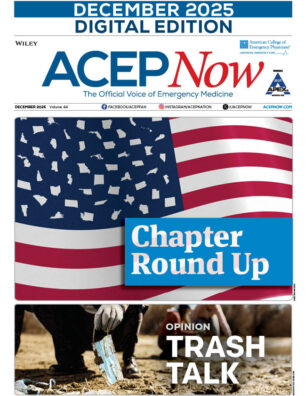A combination of brief interventions during and after an emergency department (ED) visit may be able to curb future suicidal behavior in at-risk individuals, a large multicenter study at eight U.S. EDs in seven states suggests. “A multifaceted intervention that began in the ED and continued by telephone after the ED visit significantly reduced the number of future suicide attempts and other types of suicidal behavior,” lead author Dr. Ivan W. Miller told Reuters Health by email.
“The implications for clinical practice are that we can reduce suicidal behavior with relatively low-cost interventions,” explained Dr. Miller, of Brown University’s Alpert Medical School in Providence, Rhode Island.
Suicide is the tenth leading cause of death in the U.S., accounting for more than 44,000 deaths each year.
“Emergency departments treat many patients who are at risk for suicide and thus, are an ideal location to intervene to reduce subsequent suicidal behavior,” Dr. Miller explained.
The investigators assessed more than 237,000 adults visiting the ED for eligibility and enrolled 1,376 who reported a recent suicide attempt or ideation (median age of 27, nearly 60 percent female). To increase generalizability of findings, none of the participating centers had psychiatric services within or adjacent to the ED.
The study is part of the Emergency Department Safety Assessment and Follow-up Evaluation (ED-SAFE), which was designed to examine the effects of universal screening and an intervention on persons at risk of suicide. “To our knowledge, this study is the largest suicide intervention trial ever conducted in the United States,” the researchers note in JAMA Psychiatry, online April 29. The publication was released to coincide with a presentation at the 50th Annual Conference of the American Association of Suicidology in Phoenix, Arizona.
In the first of three sequential phases, during 2010 to 2011, 497 patients visiting the ED received usual care (treatment as usual, or TAU), to serve as a control. A total of 377 patients in the second “screening” phase (from 2011 to 2012) underwent universal suicide risk screening. The 502 patients in the “intervention” phase (2012 to 2013) also underwent universal screening. The intervention included additional suicide risk screening from physicians, suicide prevention information from nurses, a personal safety plan patients could elect to fill out to be prepared to address suicidal thoughts and a series of up to seven brief telephone calls from 10 trained advisors at one centralized location for one year after the index ED visit.
Multiple attempts were made to complete each scheduled call, which followed a protocol designed to reduce suicide risk. Participants also had the option of designating a significant other to receive up to four follow-up calls.
A total of 288 people (21 percent of all participants) made 548 suicide attempts, five of them fatal (in the TAU and screening-only groups). About 18 percent of the intervention group attempted suicide compared with about 23 percent of the TAU group, a significant risk reduction.
This level of risk reduction means that for every 100 high-risk adults who received the intervention, five were prevented from attempting suicide in the year after the index ED visit.
The intervention group also had a 15 percent lower relative risk compared with the TAU group for a “broader suicide composite” (attempted or completed suicides, suicide preparatory acts and interrupted or aborted attempts). The screening-only group showed no reduction in risky behavior compared with the TAU group.
Dr. Miller said that despite surprisingly low levels of compliance (only about 61 percent of the intervention group completed one or more of the follow-up calls), “we found significant reductions in future suicidal behavior.”
“The ED-SAFE study is especially timely, given few large-scale efforts to reduce suicide risk in the ED, despite calls from suicide experts and policy makers,” Drs. Jeffrey Bridge and John Campo of Ohio State University in Columbus, and Dr. Lisa Horowitz of the National Institute of Mental Health in Bethesday, Maryland, said in an accompanying editorial.
Besides adding to evidence that targeted efforts to recognize and intervene with individuals at risk for suicide can be life-saving, the study calls attention to “a societal blind spot,” they note. “It is currently normative for EDs in the United States to lack on-site psychiatric services despite the association of mental disorders with 3 leading causes of death: suicide, accidents, and violence,” they wrote.
“This study demonstrates the critical role emergency medicine can play in self-violence prevention,” Dr. Jennifer Wiler, executive vice chair of emergency medicine at the University of Colorado Anschutz Medical Campus in Aurora, told Reuters Health by email. “This was a study of adults, but the rates of suicide are high among teens and should be an area of focus in future studies,” noted Dr. Wiler, who was not involved in the current study.
The study had no commercial funding, and the authors reported no disclosures.
Pages: 1 2 | Multi-Page





No Responses to “Intervention During, after ED Visit May Reduce Suicide Attempts”